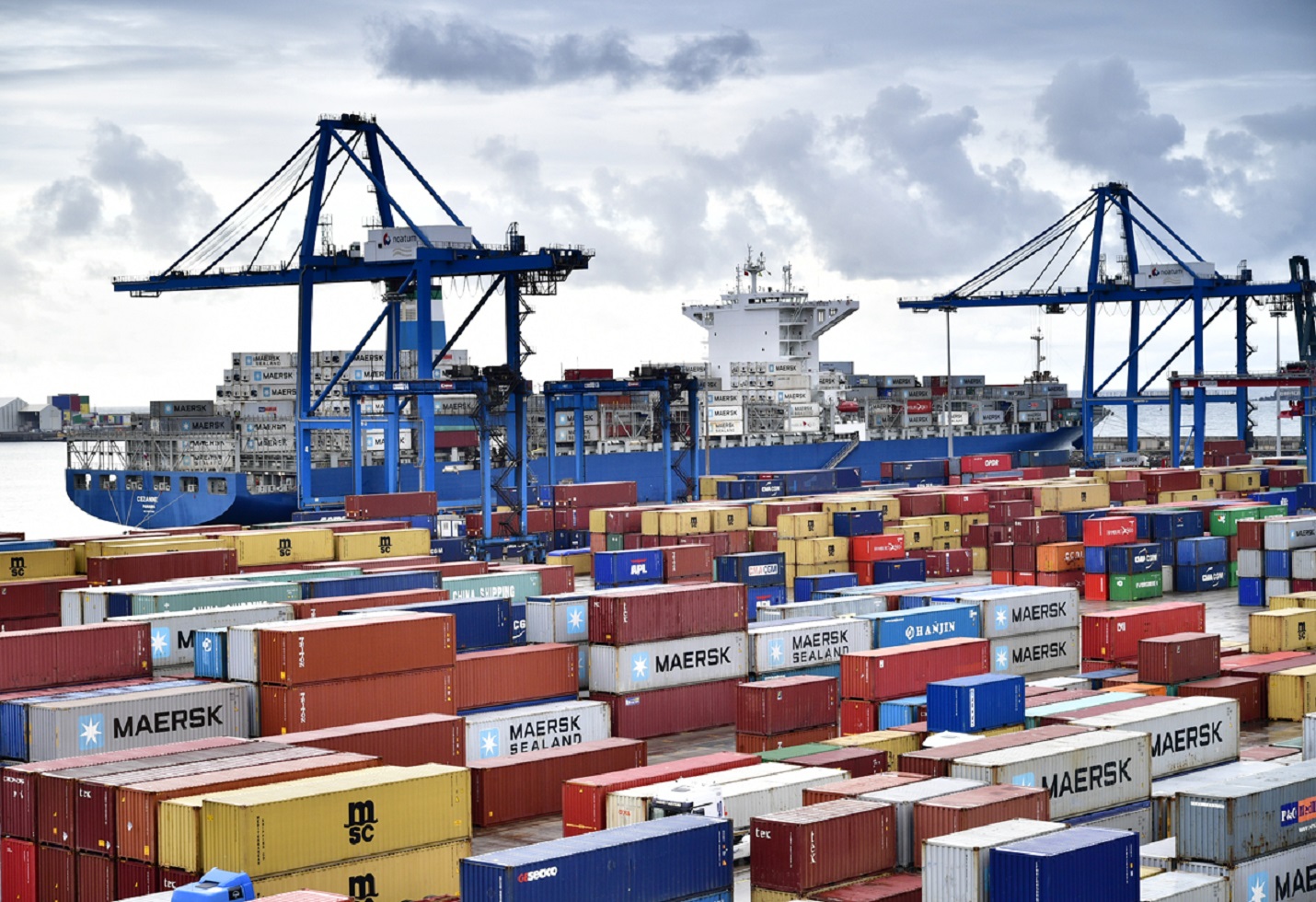Zomato’s Q1FY25: 253 Crore Profit Surge, 4,206 Crore Revenue, Driven by Strong Vertical Performance
Company Overview
Zomato’s technological platform, introduced in 2010, serves the needs of customers, restaurant partners, and delivery partners by connecting them. When dining out, customers use the Zomato platform to find restaurants, order meal deliveries, reserve tables, write and read reviews, and upload and view images. Additionally, Zomato offers its restaurant partners industry-specific marketing tools that help them attract and retain customers to expand their businesses, while providing a reliable and efficient last-mile delivery service. Zomato also runs Hyper pure, a one-stop shop that provides restaurant partners with premium food and kitchenware.
Industry Overview:
The food delivery industry in India has grown rapidly over the last ten years due to a mix of factors, including rising internet usage, an expanding middle class, and shifting consumer habits.
Market Value: The Indian meal delivery market was estimated to be worth $5 billion in 2023 and is projected to expand at a compound annual growth rate (CAGR) of 12–15% in the coming years.
Drivers of Growth: Urbanization, rising disposable income, the spread of cell phones, and the convenience provided by meal delivery services are some of the main drivers propelling this expansion.
Challenges:
Profitability: Food delivery companies continue to struggle with profitability due to high customer acquisition costs, discounts, and delivery expenditures, despite their rapid expansion.
Competition: Food delivery businesses must exercise caution with respect to labor laws, food safety standards, and data privacy issues.
Future Outlook Expansion into Tier II and III Cities:
As urban markets reach saturation, businesses are branching out into smaller cities and towns, presenting new growth opportunities
. Service Diversification: Some platforms are extending their services beyond just meal delivery.
Technological Advancements: The application of AI, machine learning, and data analytics is anticipated to boost operational efficiency, optimize delivery routes, and improve customer experience. Considering all factors, the Indian meal delivery market is expected to grow significantly due to changing consumer tastes, technological breakthroughs, and the strategic expansion of major players. However, profitability and competition remain significant challenges to long-term success.
Q1FY25 Business Performance:
According to Zomato’s Q1 FY25 results, all major business segments performed exceptionally well. The company’s reported total net profit of ₹253 crore marks a considerable increase compared to ₹2 crore in the same quarter last year. This represents a 44.5% increase over the previous quarter. Operating income was ₹4,206 crore, up 74% year over year. Outstanding progress across Zomato’s various business verticals drove this growth: Businesses are growing and becoming more profitable, which is driving their scaling well
Gross Order Value (GOV): GOV growth accelerated to 53% YoY (14% QoQ) to INR 15,455 crore. Food Delivery: The segment’s gross order value (GOV) increased by 27% year over year, with revenue increasing by over 10% on a quarterly basis to ₹2,256 crore.
Quick Commerce (Blinkit): This category grew impressively, with sales reaching ₹942 crore in Q4 and GOV increasing by 130% year over year.
Going-Out: This relatively new area brought in ₹95 crore in revenue for the quarter, with a 106% year-over-year growth in GOV.
Hyperpure (B2B Supplies): Revenue increased to ₹1,216 crore, reflecting a 27% quarter-over-quarter growth.
Adjusted Revenue INR CR
| Particulars |
Q1FY24 |
Q2FY24 |
Q3F24 |
Q4FY24 |
Q1FY25 |
Q-o-Q Change |
| Food Delivery |
1,742 |
1,938 |
2,064 |
2,050 |
2,256 |
10% |
| Quick Commerce |
384 |
505 |
644 |
769 |
942 |
22% |
| Going Out |
42 |
49 |
73 |
93 |
95 |
2% |
| B2B supplies Hyper pure |
617 |
745 |
859 |
951 |
1,212 |
27% |
| Others |
1 |
3 |
8 |
10 |
15 |
50% |
| ADJ .Revenue |
2,786 |
3,240 |
3,646 |
3,873 |
4,520 |
17% |
| YOY % |
54% |
54% |
54% |
61% |
62% |
– |
Adjusted EBITDA INR CR
| Particulars |
Q1FY24 |
Q2FY24 |
Q3FY24 |
Q4FY24 |
Q1FY25 |
Q-o-Q % |
| Food Delivery |
181 |
204 |
252 |
275 |
313 |
38% |
| Quick Commerce |
-133 |
-125 |
-89 |
-37 |
-3 |
34% |
| Going Out |
3 |
1 |
1 |
-11 |
10 |
21% |
| B2B supplies Hyper pure |
-35 |
-34 |
-34 |
-23 |
-22 |
1% |
| Others |
-4 |
-5 |
-5 |
-10 |
1 |
11% |
| Adj.EBITDA |
12 |
41 |
125 |
194 |
299 |
105% |
Gross Order Value ( B2C Business)
| Particulars |
Q1FY24 |
Q2FY24 |
Q3FY24 |
Q4FY24 |
Q1FY25 |
Q-o-Q % |
| Food Delivery |
7,318 |
7,980 |
8,486 |
8,439 |
9,264 |
10% |
| Quick Commerce |
2,140 |
2,760 |
3,542 |
4,027 |
4,923 |
22% |
| Going Out |
616 |
682 |
858 |
1,069 |
1,268 |
19% |
| GOV B2C |
10,070 |
11,422 |
12,886 |
13,536 |
15,455 |
14% |
| YoY % Food Delivery |
14% |
20% |
27% |
28% |
27% |
– |
| YoY % Quick Commerce |
– |
– |
103% |
97% |
130% |
– |
| YoY % Going Out |
61% |
129% |
154% |
207% |
106% |
– |
| YoY % B2C Business |
48% |
47% |
47% |
51% |
53% |
– |
Additionally, the company’s adjusted EBITDA increased to ₹287 crore from ₹299 crore in the prior quarter, primarily due to margin expansion in every business unit. Zomato’s robust market position has been strengthened by these outcomes, as evidenced by its market cap surpassing $25 billion during the quarter. The contribution margin from food delivery witnessed some contraction in Q1FY25, although the adjusted EBITDA margin saw improvement. The contribution margin decreased marginally on a QoQ basis (from 7.5% to 7.3%), and small fluctuations are expected to persist due to seasonality and other variables. Nonetheless, the company remains on course to reach its objective of a 4-5% adjusted EBITDA margin (as of Q1FY25, it stands at 3.4%).
Q1FY25
| Particulars |
Q1FY25 |
Q4FY24 |
Q1FY24 |
YoY% |
QoQ% |
| Total Revenue |
4,206 |
4,206 |
2,416 |
74% |
18.08 |
| Operating Income |
177 |
177 |
-48 |
-469% |
-3% |
| Operating Income |
236 |
235 |
181 |
– |
– |
| PBT |
239 |
161 |
-15 |
-1693% |
48.57% |
| Tax |
-6% |
-9% |
113% |
283 |
-1191 |
| PAT |
253 |
175 |
2 |
12550% |
44.57% |
| EPS |
0.29 |
0.2 |
0 |
– |
45% |
Highlights of the Business with New Annual Initiatives:
Zomato Everyday: Offers reasonably priced home-cooked meals on a cycle. The service is still in its early stages and is currently being tested in a few select locations in Mumbai, Bengaluru, and Delhi NCR. Zomato Legends: Allows users to order famous dishes from legendary restaurants. Currently available in eight Indian cities, with eighty renowned restaurants already on board. Meals Served on Trains: Customers can get restaurant-quality food delivered to their trains through a partnership with IRCTC. Live streaming is available across more than 80 train stations in India. Blink it: Expanded the range of products on its platform in FY24 to meet customers’ needs in both new and existing product categories, such as games and toys, flowers and plants, printing, sports, home renovation, luggage, and fashion jewellery. In FY24, the going-out GOV increased by 136% YoY to INR 3,225 crore. Topline development was solid: Balanced income expanded by 56% YoY, and B2C GOV by 48% YoY. Bengaluru had Zomato’s biggest nourishment conveyance arrange in FY24, with a single arrange totalling INR 32,828. Order frequency and transacting client growth were the main drivers of order volume growth. Both the delivery partner network and restaurant partner base saw significant growth. The shop network experienced significant growth in FY24, leading to a 28% YoY increase in warehousing capacity, reaching 4.8 million sqft.
Financial Performance
Zomato Ltd. (Zomato) revealed sales of Rs 4,206 Cr in Q1FY25, surpassing projections and rising 18% on a quarter-over-quarter (in rupee terms). 1. Revenue: Zomato recorded ₹4,206 crore in total revenue from operations, a 74% increase from the previous year. Comparing this to ₹2,416 crore in Q1 FY24, there was a noticeable increase.2. Net Profit: From ₹2 crore in Q1 FY24 to ₹253 crore, the company’s consolidated net profit experienced a sharp increase. This was a consecutive rise of 44.5% from ₹175 crore in Q4 of FY24. 3. Expenses: In Q1 FY25, total expenses came to ₹4,203 crore, compared to ₹2,612 crore in Q1 FY24 and ₹3,636 crore in the previous quarter. The expenditures related to delivery, procurement, and employee benefits were the main causes of the increase in expenses. Net Arrange Esteem (GOV): Zomato’s GOV expanded by 53% year over year to ₹15,455 crore over all of its B2C operations. The GOV for the food delivery sector went up from ₹8,439 crore to ₹9,264 crore in the previous quarter. Positively, the B2B vertical experienced strong QoQ growth of 19%, and the management is still quite optimistic about this sector.
Concall Highlights:
Financials Management:
Growth in Q1FY25: Zomato recorded a year-over-year (YoY) increase in Gross Order Value (GOV) of 27%–28%, and growth above 20% is anticipated in the near future.
Margin: The management stated that they want to continuously invest in growth while focussing on expanding the margins over time. Contribution margins are targeted to be between 4% and 5%, although no deadlines have been established for meeting this goal.
Food Delivery Industry Perspectives:
Market Dynamics: The management saw that restaurant partners did not express any particular concerns about demand, which suggests a stable picture for the meal delivery industry.
Promotional Discounts: The absence of significant promotional discounts that had an adverse effect on margins during the quarter indicates a robust demand environment.
Order Volume Growth: With a major contribution from Zomato Gold subscribers, order volume—rather than average order value (AOV)—drives GOV growth.
Rapid Growth in Trade:
Store Ramp-Up: Zomato has already opened 113 of its planned 2,000 locations by March 2026. The management has faith in its ability to keep up service standards in order to draw clients in new areas.
Competition: Zomato’s growth is likely to bring about competition, but management is confident that they can continue to turn a profit in spite of possible market challenges.
Blink its operation:
Take Rate Dynamics: A number of variables, including product mix and food inflation, affect Blinkit’s take rate. The management emphasised that higher-take-rate products outside of the core category are now responsible for a greater share of sales.
Store Operations: Local partners oversee the majority of new locations, with an emphasis on upholding consistent and high-quality customer service. SKU Expansion: Blink it has been steadily increasing the number of SKUs, which has aided in overall growth.
Working capital and capital expenditures:
Capex Increase: The expansion of Blink it stores and improvements to Hyperpure’s warehouse capacity are the reasons for the increase in capital expenditure.
Working Capital Release: Growth in the Hyperpure business, which runs on positive working capital, was responsible for a working capital release of almost ₹175 crores.
Perspective on Strategy:
Market Share in Southern India: Over the last few years, Zomato’s market share in southern India has increased dramatically and is now on par with national norms.
Emphasis on Quality: In order to stand out from rivals, particularly in emerging areas, management stressed the significance of upholding high service standards.
The image added is for representation purposes only










